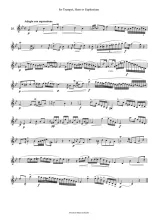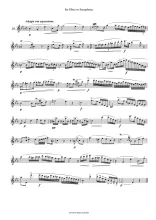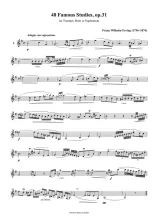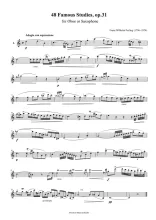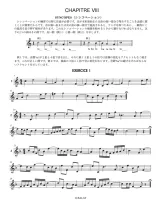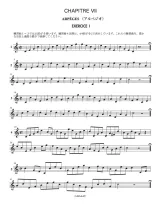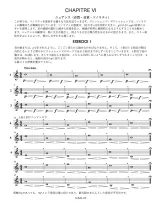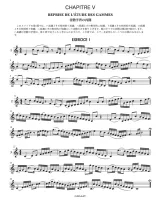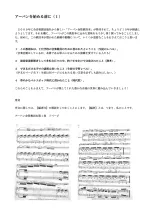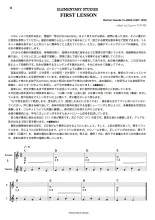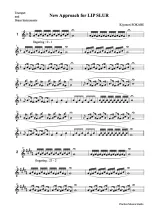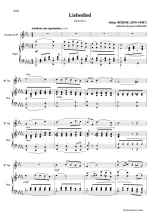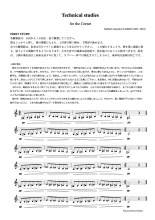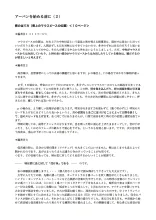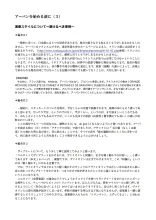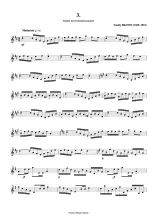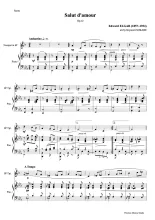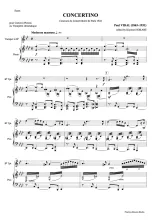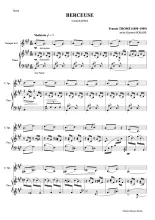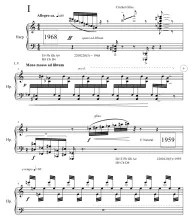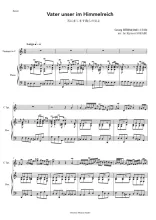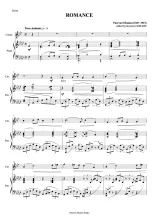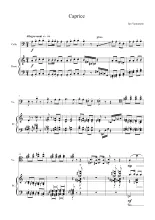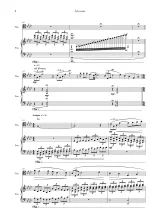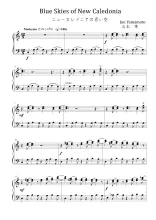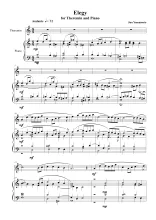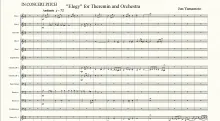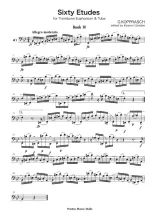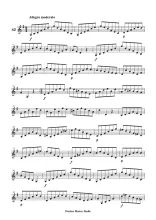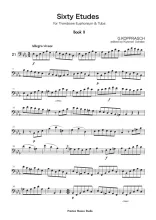New Releases
Our Staff Picks
News
Caprice on "Zui-zui Zukkoro Bashi" (Full version)
YAMAMOTO, Jun山本準
“Zui-zui-zukkoro-bashi” is an old Japanese, children’s play song.
This composition is based on the song. The song has very distinct characteristics
so that the composer has long wished to arrange it into an original piece.
「ずいずいずっころばし」は日本の古い童謡です。
この曲は、この歌を元に作曲されました。この歌は非常に特徴的なので、作曲者は長い間、オリジナルの曲に編曲したいと考えていました。
Caprice on "Zui-zui Zukkoro Bashi" (Full version)
YAMAMOTO, Jun山本準
“Zui-zui-zukkoro-bashi” is an old Japanese, children’s play song.
This composition is based on the song. The song has very distinct characteristics
so that the composer has long wished to arrange it into an original piece.
「ずいずいずっころばし」は日本の古い童謡です。
この曲は、この歌を元に作曲されました。この歌は非常に特徴的なので、作曲者は長い間、オリジナルの曲に編曲したいと考えていました。
À la mer
YAMAMOTO, Jun山本準
An expressive short duo piece for trombone and piano, lasting just under six minutes.
トロンボーンとピアノのための表情豊かなデュオの小品です。演奏時間は6分弱です。
À la mer
YAMAMOTO, Jun山本準
An expressive short duo piece for trombone and piano, lasting just under six minutes.
トロンボーンとピアノのための表情豊かなデュオの小品です。演奏時間は6分弱です。
Blue Skies of New Caledonia for Piano Solo
YAMAMOTO, Jun山本準
A short piano piece for children.
New Caledonia is a French overseas territory (collectivité sui generis, special community). It is a mining island that produces nickel, and also a resort. New Caledonia's coral reefs are registered as a World Heritage Site. As of 2024, a political upheaval has occurred and the country is under a state of emergency, but I believe the beautiful sea and sky are as beautiful as ever.
子供向けのピアノ曲小品。
ニューカレドニアはフランスの海外領土(collectivité sui generis、特別共同体)です。ニッケルを産出する鉱業の島であり、かつリゾート地でもあります。ニューカレドニアの珊瑚礁は世界遺産に登録されています。2024年現在、政変が起きており非常事態下にありますが、美しい海と空はかつてのままだと思います。
Elegy for Theremin and Piano
YAMAMOTO, Jun山本準
Theremin and Piano version of "Elegy for Theremin and Orchestra".
エレジー~テルミンとオーケストラのための、をテルミンとピアノ用に編曲したものです。
Elegy for Theremin and Orchestra
YAMAMOTO, Jun山本準
Elegy for Theremin and Orchestra. Dedicated to Miquette, theremin player.
テルミンとオーケストラのための「エレジー」です。テルミン奏者、三毛子に献呈されています
60 Etudes for Low part by Kopprasch vol.3(41~60) for trombone
KOPPRASCH, Georg (arr. SOKABE, Kiyonori)ゲオルク・コプラッシュ(arr. 曽我部清典)
60 studies by G. Kopprasch for trombone vol.3 (no.41~60)
トロンボーンおよびユーフォニアム奏者のためのコプラッシュ教本第3集です。チューバ奏者にも適用できます。コプラッシュの原典に即して編集したので、他社の製品とは異なる部分があることにご注意ください。手に取り易いように3つに分けました。その第3集です。
60 Etudes for Low part by Kopprasch vol.3(41~60) for trumpet
KOPPRASCH, Georg (arr. SOKABE, Kiyonori)ゲオルク・コプラッシュ(arr. 曽我部清典)
60 studies by G. Kopprasch for Low Trumpet vol.3 (no.41~60) by original version
低音パートトランペット奏者のためのコプラッシュ教本第3集です。日本で通常コプラッシュの教本と言われているものです。原典から起こしたため、他社のものとは異なる部分がありますので、ご注意ください。手に取り易いように3つに分けました。その第3集。
60 Etudes for Low part by Kopprasch vol.3(41~60) for horn
KOPPRASCH, Georg (arr. SOKABE, Kiyonori)ゲオルク・コプラッシュ(arr. 曽我部清典)
60 studies by G. Kopprasch for Low Horn vol.3 (no.41~60) by original version.
低音パートホルン奏者のためのコプラッシュ教本第3集です。原典から起こしたため、他社のものとは異なる部分がありますので、ご注意ください。手に取り易いように3つに分けました。その第3集。
Summer Rain
YAMAMOTO, Jun山本準
In order to leave a lasting impression within a brief duration, I employed alternating octave repetitions with both hands on the piano. This technique aimed to depict raindrops and ideally evoke the image of a bright summer rain. The middle section features a driving motif with a left-hand ostinato and right-hand triads, composed to encourage and motivate myself. The part marked "as fast as possible" incorporates a jazz idiom, inserted to serve as an accent within the piece.
短い持続の中で聞き手に印象を残すためピアノの両手が交互に演奏するオクターブの反復を使った。この音型によって雨粒を表現し、できれば明るい夏の雨を想起させる作品としたかった。中間部には左手のオスティナートと右手の3和音を伴う、推進力ある楽想を配置して、自らを叱咤激励するつもりで作曲したものである。“as fast as possible”と指定した部分はジャズのイディオムであり、曲中のアクセントとすべく挿入した。
60 Etudes for Low part by Kopprasch vol.2(21~40) for trombone
KOPPRASCH, Georg (arr. SOKABE, Kiyonori)ゲオルク・コプラッシュ(arr. 曽我部清典)
60 studies by G. Kopprasch for trombone vol.2 (no.21~40)
トロンボーンおよびユーフォニアム奏者のためのコプラッシュ教本第2集です。チューバ奏者にも適用できます。コプラッシュの原典に即して編集したので、他社の製品とは異なる部分があることにご注意ください。手に取り易いように3つに分けました。その第2集です。
